Sparks Belting Celebrates 75 Years of Service and Expanded Operations
Conveyer solutions manufacturer relocates to larger plant that will pave the way for increased production during its milestone year
Read MoreConveyer solutions manufacturer relocates to larger plant that will pave the way for increased production during its milestone year
Read More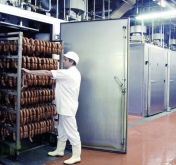
A large food manufacturing company has been using a newly installed conveyor belt for pig intestines at its processing facility. The new belt includes key features, specifically the new system is equipped with synchronous drum motors. Regardless of the repetitive daily pressure cleaning with hot water, the conveyor has been running consistently for more than a year without downtime or maintenance.
Read More
As the National Sales Manager of Sparks Belting, I can attest that Sparks Belting is committed to providing the highest form of a total customer experience within our industry. As our industry grows and evolves, suppliers within our industries will be facing new challenges and opportunities to improve cost savings, production output, and serviceability.
Read More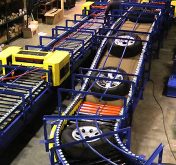
A tire retread facility in Covington, Georgia reached out to Sparks Belting to help solve a slipping issue with their conveyor belts. The company is a leader in the tire retread industry with millions of tires on the road across North America.
Read More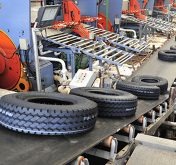
An international automobile tire manufacturer in the southern USA came to Sparks Belting to provide their conveyor belting for a new plant they were opening. Committed to quality and innovative technology, this tire manufacturer is one of the largest in the world.
Read More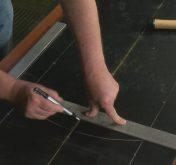
Accurate squaring of the belt ends prior to lacing is essential to correct belt tracking and helps distribute stress evenly throughout the joint.
Read More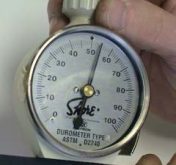
Durometer is one of several measures of the hardness of a material. It can be identified as a material’s resistance to a permanent indentation or it can be identified as a material’s resistance to penetration of a sharp object.
Read More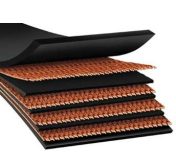
Some conveyor belting is manufactured with one ply of fabric. This fabric layer can be coated with rubber, polymer, or elastomer. Yet, most conveyor belting is manufactured using two or more plies of fabric that are adhered to each other by using inner layers of rubber, polymer, or elastomer.
Read More
Static electricity is defined as electrical charge at rest. It can be caused by the triboelectric effect and can be accumulated by inductive and conductive charging.
Read More
Understanding a basic conveyor belt calculation will ensure your conveyor design is accurate and is not putting too many demands on your system.
Read More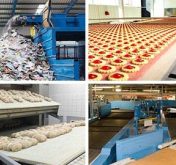
Aligning and controlling a belt so it maintains its desired path is often difficult to do. Many factors influence the belt's ability to track correctly.
Read More
Collecting and earning documented cost savings from vendors is a reality in today’s competitive manufacturing environment. Buyers are often faced with the difficult task of saving a fixed percentage on their MRO spend year on year. Belting is an ideal product to save money on due to the wide variety of materials available, specialty fabrications, and how it interacts with your product and conveyors. Sparks is an industry-leading expert in providing cost savings to a wide variety of industries.
Read More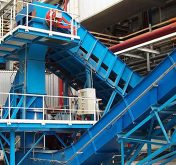
There is a science behind selecting the correct conveyor belt for your conveyors. Conveyor belt specification is both a process of elimination and, at the same time, honing in on the critical and fixed variables associated with your conveyor. This guide will steer you on the right path to selecting a better conveyor belt for your conveyor.
Read More
Conveyor belt fasteners are manufactured in two styles—hinged and solid plate. Hinged belt fasteners are applied as individual segments to a belt end and then connected with a hinge pin. Solid plate fasteners span opposing belt ends that have been butted together, forming a tight, sift-free splice.
Read More
Training a conveyor belt to run centered on your conveyor requires patience and a strong understanding of how conveyors work. Following this 4-step conveyor belt tracking process will help reduce downtime, extend your belt life, and save money.
Read More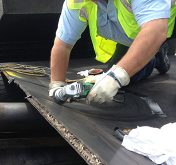
Properly tensioning a conveyor belt is a critical step in tracking conveyor belts. Getting the correct amount of tension reduces splice failures, excessive stretch, and wear on the side of your frame. Luckily, there is a simple procedure to achieve the proper tension on a belt.
Read More
Maintenance personnel and managers need to be in agreement as they consider various factors impacting the timing and necessity of conveyor belt repair.
Read More
Auto stamping conveyors can be an extremely challenging environment for conveyor belts, making it difficult to keep belts functioning properly and productively.
Read More
Increased demands for less downtime put maintenance managers in a catch-22. Although maintenance teams are charged with finding new and better products for their plant, sometimes the risks don’t outweigh the potential rewards. Since they have a history of how their existing belts perform, managers can develop a plan to change them without disrupting production.
Read More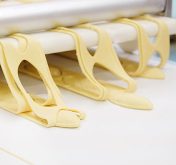
Oven take-off conveyor belts are one of the most demanding applications in the cookie and cracker industry. When these belts fail, it shuts down the entire production line and costs a tremendous amount of money. Luckily there is a solution that can lead to substantial cost savings!
Read More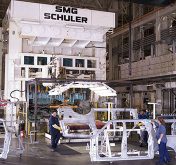
Automotive stamping conveyors are some of the most demanding and abrasive conveyor belt applications in the industrial world. Belts must withstand sharp edges, oils, slicing, and cutting. It's common for parts to get caught between pulleys or stacking tables and create major damage as a result. Safety and ergonomic conditions also factor into the decision to create transfer points with an absolute minimum spacing.
Read More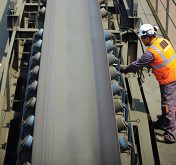
Managers and maintenance personnel need to be on the same page as they weigh the various factors when considering conveyor belt repair.
Read More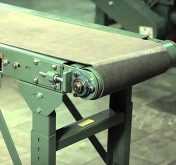
A common challenge for plant maintenance is controlling and aligning a belt so it maintains its desired path. Many factors influence a belt's ability to track correctly.
Read More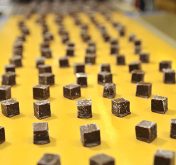
Getting the right food grade conveyor belt for the right application is critical to producing high quality products.The confectionery industry requires the handling of various chocolates, sweets, candies and chewing gum, each requiring a conveyor belt with the right properties to handle their application.
Read More
Conveyor belts generally break in the middle of demanding production runs when downtime simply isn’t an option. Ordering a new replacement belt at this point is going to cost hours-if not days of additional downtime before you can begin to install it on your conveyor. Luckily, there are a few proven conveyor belt repair practices that will get you up and running faster.
Read More5 factors to consider when selecting a replacement conveyor belt.
Read More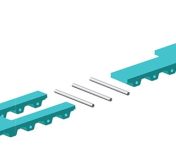
More and more, machine designers are using endless urethane timing belts in place of flat belts in their equipment design for the accurate movement of product. But, changing timing belts on many machines can be very time-consuming. Quite often, the design of these machines does not allow for the replacement of endless belts without significant disassembly of the machinery, causing considerable downtime and lost production.
Read More